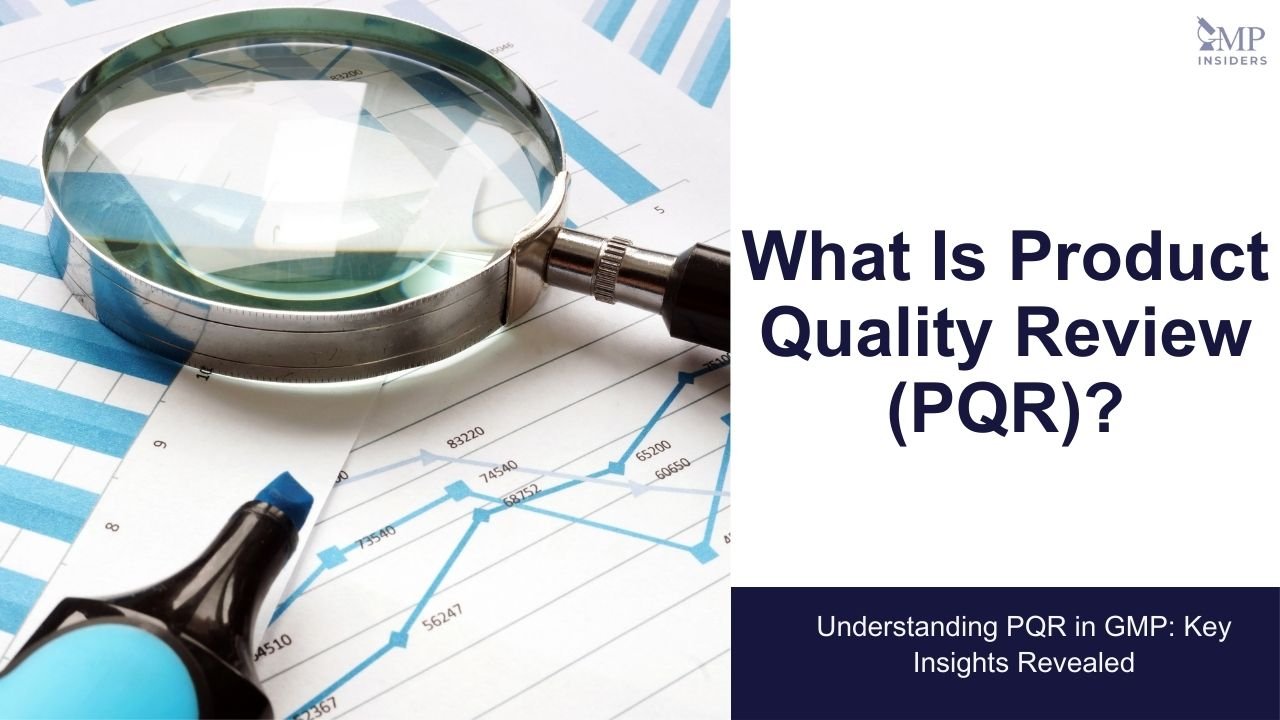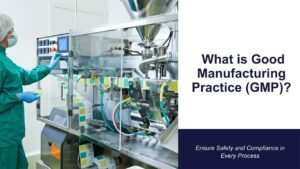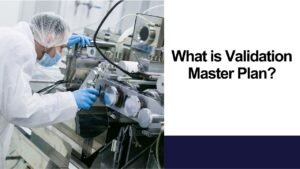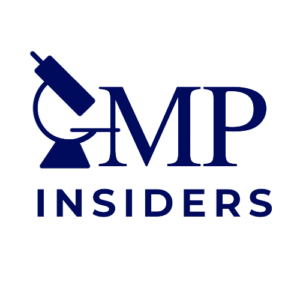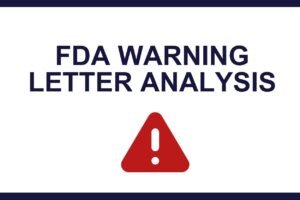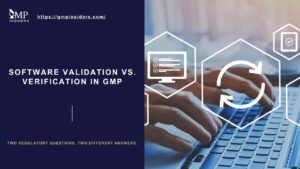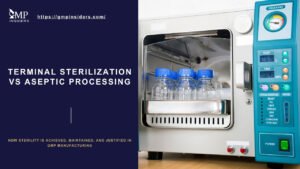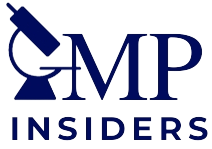Product Quality Reviews (PQRs) serve as a cornerstone in GMP, comprehensively evaluating production and quality control processes. This systematic review confirms product quality and consistency and identifies areas for improvement, ensuring that every batch produced meets the highest standards.
In this article, we will look into the essential components, objectives, and challenges of PQR, highlighting its critical role in maintaining the integrity of pharmaceutical products.
What is a PQR?
A Product Quality Review (PQR) is a comprehensive evaluation of the production and control of a pharmaceutical product. It is designed to verify the consistency of the process, identify any trends, and ensure that the product remains in compliance with regulatory standards.
PQRs are essential for maintaining the integrity and safety of pharmaceutical products, providing a detailed review of every aspect of production from raw materials to finished products.
RELATED: Different Types of GMP Documentation Used In Pharma Industry
Purpose of PQR
The primary purpose of a PQR is to systematically evaluate the quality of a pharmaceutical product over a specified period. This ongoing assessment ensures that the manufacturing processes consistently produce products that meet predefined quality standards and regulatory requirements. By reviewing data from various batches, PQR aims to achieve several critical objectives:
1. Confirm Product Quality
- Verification of Quality Attributes: PQR helps to verify that each batch of the product meets the intended quality attributes, such as purity, potency, and stability. This ensures that the product is safe and effective for patient use.
- Consistency Across Batches: It confirms that the manufacturing process consistently produces batches of the product with uniform quality, thereby ensuring reliability and trust in the product.
2. Identify Areas for Improvement
- Process Optimization: By analyzing data from multiple batches, PQR can identify any variations or inefficiencies in the production process. This insight allows for targeted improvements and optimizations to enhance overall process efficiency and product quality.
- Corrective Actions: It highlights areas where corrective actions are needed to address deviations or non-conformities that could impact product quality.
3. Ensure Regulatory Compliance
- Adherence to Standards: PQR ensures that the manufacturing processes comply with regulatory requirements set by authorities such as the FDA and EMA. This compliance is essential for maintaining product approval and market authorization.
- Documentation and Traceability: The review process ensures comprehensive documentation of all manufacturing activities, providing traceability and accountability, which are critical for regulatory inspections and audits.
4. Detect Trends and Anomalies
- Trend Analysis: PQR involves the analysis of data over time to identify trends, such as recurring deviations or gradual shifts in process parameters. Early detection of such trends allows for proactive measures to prevent potential quality issues.
- Outlier Detection: It helps detect outliers that may indicate underlying issues in the manufacturing process. Addressing these anomalies promptly helps maintain consistent product quality and prevents potential risks to patient safety.
Frequency of PQRs
The frequency of conducting Product Quality Reviews (PQRs) is typically on an annual basis. This annual frequency is a regulatory requirement set by major health authorities, such as the U.S. Food and Drug Administration (FDA) and the European Medicines Agency (EMA). Conducting PQRs annually ensures continuous monitoring and improvement of product quality, which is essential for maintaining the integrity and safety of pharmaceutical products.
FDA Requirements
According to the FDA, as specified in 21 CFR Part 211.180(e), pharmaceutical companies are required to conduct an Annual Product Review (APR). This review must include an evaluation of all batches produced and highlight any trends or deviations that could impact product quality.
The annual review helps ensure that the product consistently meets quality standards and identifies any necessary adjustments or improvements in the manufacturing process.
EMA Requirements
The EMA outlines its requirements for Product Quality Reviews in Chapter 1 of EudraLex Volume 4, specifically in Section 1.10. This section mandates that marketing authorization holders conduct an annual PQR. The review should cover all batches released, returned, or rejected and evaluate any deviations or changes that could affect product quality.
This annual review is crucial for maintaining compliance with EMA regulations and ensuring that the product remains safe and effective for patients.
What If No Batches Are Manufactured In the Year?
If no batches of a particular product are manufactured during a given year, it is still essential to conduct a PQR. The focus of the PQR in such cases will be on confirming that there were no production activities and ensuring that all systems remain ready for future manufacturing. This includes:
- Review of the Previous Year’s Data: Analyze the data and trends from the last period when batches were produced. Ensure that any previously identified issues have been resolved and that the corrective actions taken are still effective.
- Verification of Readiness: Confirm that all equipment, facilities, and processes are maintained in a state of readiness for future production. This includes performing necessary maintenance, calibration, and validation activities.
- Regulatory Compliance: Ensure that all regulatory requirements and standards are continuously met, even in the absence of production. This includes maintaining up-to-date documentation and being prepared for any regulatory inspections or audits.
- Training and Competency: Verify that staff training and competency are maintained. Ensure that personnel are ready to resume production activities as soon as it becomes necessary.
- Evaluation of Market and Supply Chain: Assess the market demand and supply chain to ensure that the company is prepared to respond quickly when production resumes. This includes verifying the availability of raw materials and ensuring that supplier qualifications are up to date.
RELATED: Supplier Qualification in GMP
Stages of the Product Quality Review Process
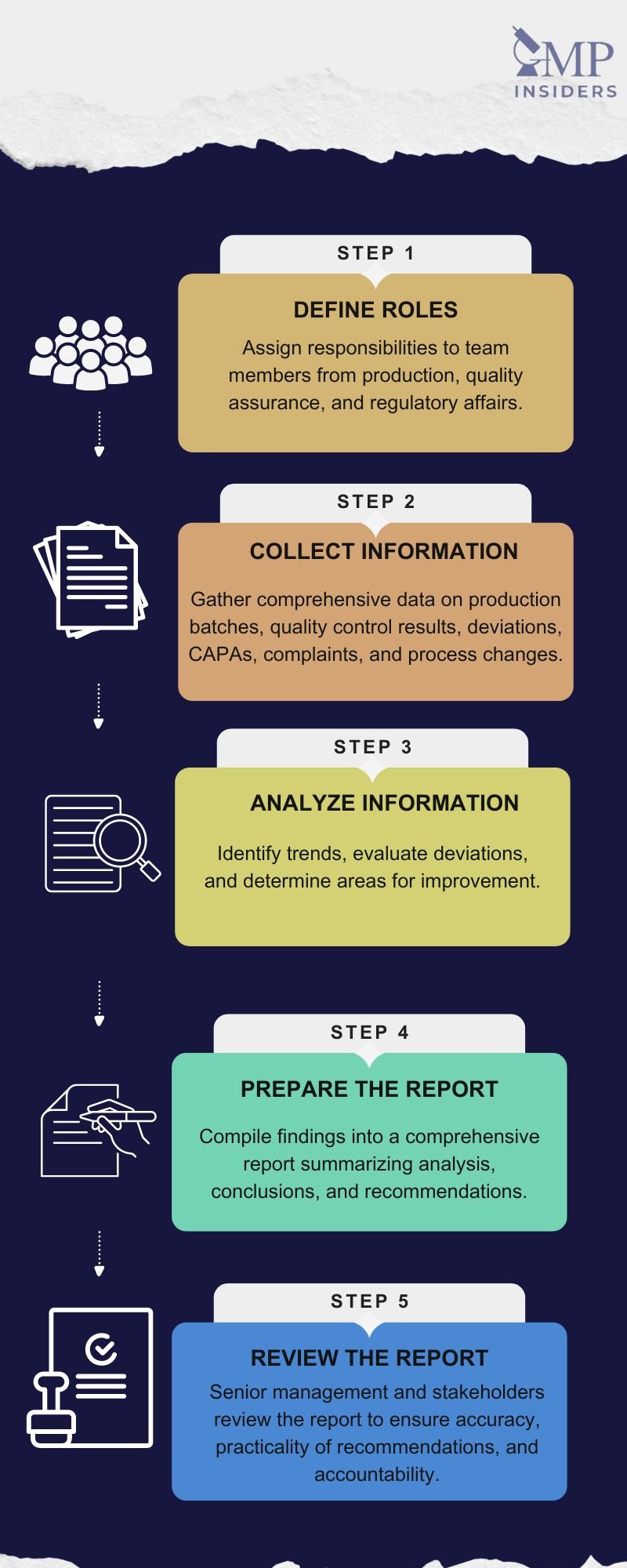
The Product Quality Review (PQR) process involves several critical stages to ensure a comprehensive evaluation of the product’s quality over time. Each stage is essential for a thorough and effective review. Below are the key stages, along with their roles and importance.
Define Roles
The first stage of the PQR process is to define roles and assign responsibilities to team members. This includes personnel from production, quality assurance, and regulatory affairs. Clearly defined roles ensure that every aspect of the PQR is covered efficiently and that there is accountability for each task. Team members need to understand their specific duties and how they contribute to the overall review process.
Collect Information
Once roles are defined, the next step is to collect information. This involves gathering comprehensive data on:
- Production Batches
- Quality Control Results
- Deviations
- CAPAs (Corrective and Preventive Actions)
- Complaints
- Changes in the Production Process
Analyze the Information
After collecting the necessary data, the next stage is to analyze the information in detail. This analysis aims to:
- Identify Trends: Detect patterns or trends in quality attributes and process performance.
- Evaluate Deviations: Assess the impact of deviations on product quality and determine root causes.
- Determine Areas for Improvement: Highlight areas where the production process can be optimized to enhance product quality and efficiency.
Prepare the Report
The findings from the data analysis are then compiled into a comprehensive report. This report should:
- Summarize the Analysis: Provide a clear and concise summary of the data analysis.
- Outline Conclusions: Present conclusions drawn from the analysis regarding product quality and process performance.
- Recommend Actions: Include actionable recommendations for addressing any identified issues and for continuous improvement.
Review the Report
The final stage of the PQR process is the review of the report by senior management and relevant stakeholders. This review ensures that the report:
- Accurately Reflects Quality Status: Verifies that the report accurately represents the product’s quality status.
- Includes Actionable Recommendations: Confirms that the recommendations are practical and aimed at improving product quality.
- Ensures Accountability: Identifies responsible parties for implementing the recommended actions and tracking progress.
Content of the Product Quality Review
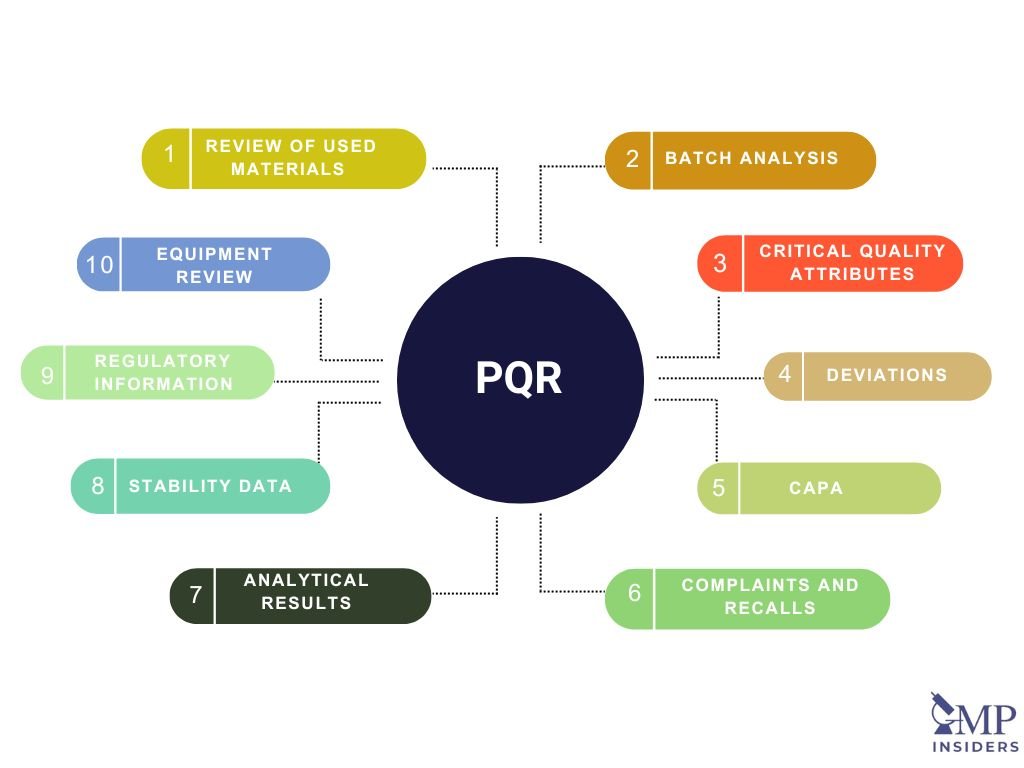
A thorough Product Quality Review (PQR) is a comprehensive evaluation that includes several critical components. These components ensure a detailed analysis of the production process, product quality, and any issues that may have arisen during the review period. The key elements of a PQR are as follows:
1. Review of Materials Used
- Approved Manufacturers: Verify that all materials (APIs, excipients, packaging) are sourced from approved manufacturers.
- Expiry Dates: Check the expiry dates of all materials to ensure they were within their shelf life when used in production.
- Batch Information: Record and review batch numbers of all materials used to maintain traceability and ensure consistency.
- Quality Agreements: Review and ensure adherence to quality agreements with suppliers and contract manufacturers. These agreements outline the quality standards and responsibilities of all parties involved.
2. Review of All Batches Produced and Released
- Batch Analysis: Examine every batch of the product that was produced and released during the review period. This includes verifying batch records and ensuring that each batch met its quality specifications before being released for distribution.
- Non-Conforming Batches: Include a review of any batches that did not meet quality specifications. Document the reasons for non-conformance, the actions taken to address these issues, and the impact on overall product quality.
- Consistency Check: Ensure consistency in the manufacturing process by comparing the quality of different batches. Identify any variations that might indicate process inefficiencies or potential issues.
3. Evaluation of Critical Quality Attributes
- Quality Metrics: Assess critical quality attributes (CQAs) such as purity, potency, dissolution, and stability of the product. This evaluation ensures that the product meets the required quality standards and performs as intended.
- Trend Analysis: Analyze trends in the CQAs over the review period to identify any gradual changes or patterns that might affect product quality. This helps in early detection of potential issues.
4. Analysis of Deviations, Changes, and Out-of-Specification Results
- Deviations: Review all deviations from standard operating procedures (SOPs) and quality specifications that occurred during the production process. Determine the root causes and assess their impact on product quality. Ensure that appropriate corrective actions are taken and documented.
- Change Control: Evaluate any changes made to the manufacturing process, equipment, or materials. Ensure that these changes were properly documented, and approved, and did not negatively impact product quality. Verify that change control procedures were followed and that changes were systematically reviewed for their impact on quality.
- Out-of-Specification (OOS) Results: Analyze any OOS results obtained during testing. Investigate the reasons for these results, determine their impact on product quality, and ensure appropriate corrective actions are taken. Document the investigation and resolution process.
RELATED: Out of Specification (OOS) Results
5. Review of Complaints and Recalls
- Customer Complaints: Review all complaints received from customers regarding the product. Investigate the nature of the complaints, identify root causes, and ensure corrective actions are implemented.
- Recalls: If any product recalls occurred during the review period, analyze the reasons for the recalls, the effectiveness of the recall process, and the steps taken to prevent recurrence.
6. Assessment of the Effectiveness of Previous Corrective and Preventive Actions (CAPAs)
- CAPA Evaluation: Assess the effectiveness of CAPAs implemented in response to identified issues or deviations. Ensure that the actions taken successfully addressed the root causes and prevented recurrence.
- Continuous Improvement: Identify opportunities for continuous improvement in the manufacturing process and quality management system based on the effectiveness of previous CAPAs.
RELATED: Corrective and Prevention Action (CAPA) Plan in GMP
7. Review of Analytical Results
- Laboratory Testing: Analyze the results from laboratory testing of the product, including raw materials, in-process materials, and finished products. Ensure that all analytical results are within specified limits and meet quality standards.
- Method Validation: Confirm that the analytical methods used are validated and reliable. Ensure that the methods provide accurate and consistent results.
8. Review of Stability Data
- Stability Testing: Evaluate stability data to ensure the product maintains its quality, safety, and efficacy throughout its shelf life. Review the results from stability studies conducted under various conditions.
- Shelf Life Assessment: Assess whether the stability data support the product’s labeled shelf life and storage conditions. Identify any trends or changes in stability that could impact product quality.
9. Review of Regulatory Information
- Product Variations: Document and review any variations to the product that have been made and approved during the review period. Ensure that all changes are compliant with regulatory requirements.
- Registrations: Verify the status of product registrations in different countries. Ensure that all necessary approvals are maintained and up-to-date.
10. Review of Equipment
- Equipment Usage: Evaluate the equipment used in the production process to ensure it is suitable and functioning correctly.
- Calibration and Maintenance: Review records of equipment calibration and maintenance to ensure all equipment was calibrated and maintained according to the schedule. Confirm that any equipment-related issues were addressed promptly and effectively.
Challenges in Conducting a Product Quality Review
Conducting a Product Quality Review (PQR) is essential for maintaining high standards of product quality and regulatory compliance in the pharmaceutical industry. However, this process comes with several challenges that companies must address to ensure a successful and thorough review. Here are some of the key challenges, along with practical tips for overcoming them.
Data Collection and Management
One of the primary challenges in conducting a PQR is the efficient collection and management of data.
Challenges:
- Volume of Data: Gathering and managing large volumes of data from various sources (e.g., production, quality control, regulatory affairs) can be overwhelming.
- Data Accuracy: Ensuring the accuracy and completeness of collected data is critical but can be difficult, especially when data is sourced from multiple departments.
Tips:
- Implement a Centralized Data System: Use a centralized database or software system to collect and store all relevant data. This can help streamline data collection and ensure consistency.
- Automate Data Collection: Where possible, automate data collection processes to reduce manual errors and improve efficiency.
- Regular Data Audits: Conduct regular audits of data to ensure its accuracy and completeness. Establish clear data entry and review protocols.
Trend Analysis
After data collection, the next significant challenge is analyzing the data to identify trends and patterns.
Challenges:
- Complexity of Analysis: Identifying meaningful trends in the data requires sophisticated analytical tools and expertise.
- Detection of Subtle Trends: Subtle trends that might indicate early signs of quality issues can be difficult to detect.
Tips:
- Use Advanced Analytical Tools: Invest in advanced statistical and data analysis tools to help identify trends and patterns in the data.
- Train Personnel: Ensure that team members involved in the analysis are trained in the use of these tools and understand how to interpret the results.
- Collaborate with Experts: Consider collaborating with data analysis experts or consultants to gain deeper insights into complex data sets.
SEE ALSO: Out of Trend Results in Pharma Industry
Resource Allocation
Efficient resource allocation is crucial to the success of the PQR process.
Challenges:
- Limited Resources: Allocating sufficient resources, including personnel, time, and budget, for conducting a thorough PQR can be challenging.
- Balancing Responsibilities: Team members often have other responsibilities, making it difficult to dedicate the necessary time to the PQR process.
Tips:
- Plan Ahead: Develop a detailed plan and timeline for the PQR process well in advance. Allocate specific periods for data collection, analysis, and report preparation.
- Assign Dedicated Roles: Assign dedicated roles to team members specifically for the PQR process. This helps ensure that the review receives the necessary attention and resources.
- Leverage Technology: Use project management software to track progress and manage resources effectively.
Regulatory Compliance
Staying compliant with regulatory requirements is another significant challenge in the PQR process.
Challenges:
- Evolving Regulations: Staying up-to-date with evolving regulatory requirements and ensuring that the PQR process complies with these standards can be difficult.
- Documentation: Ensuring thorough and accurate documentation of the PQR process is essential for regulatory compliance but can be time-consuming.
Tips:
- Regular Training: Provide regular training for team members on current regulatory requirements and guidelines.
- Standard Operating Procedures: Develop and maintain standard operating procedures (SOPs) for conducting PQRs that align with regulatory requirements.
- Regular Updates: Keep abreast of changes in regulations through industry publications, regulatory websites, and professional networks.
Effective Communication
Effective communication is vital for the success of the PQR process and for implementing its findings.
Challenges:
- Cross-Departmental Coordination: Effective communication and coordination between different departments (e.g., production, quality assurance, regulatory affairs) are essential but can be challenging.
- Actionable Recommendations: Ensuring that the findings and recommendations from the PQR are communicated effectively to senior management and relevant stakeholders is crucial for implementation.
Tips:
- Establish Clear Communication Channels: Set up clear and regular communication channels between all departments involved in the PQR process.
- Regular Meetings: Hold regular meetings to discuss progress, findings, and any issues that arise during the PQR process.
- Clear Reporting: Prepare clear and concise reports that highlight key findings and actionable recommendations. Ensure that these reports are presented to senior management in an understandable format.
FAQ
How Is Data From a PQR Utilized?
Data from a PQR is used to monitor product quality, identify trends, implement corrective actions, and ensure compliance with regulatory standards. It aids in continuous improvement and optimizing manufacturing processes.
How Does PQR Differ From Quality Control Testing?
PQR is a retrospective, comprehensive review of all production and quality data over a period, focusing on trends and overall performance. Quality Control Testing evaluates individual batches during production for compliance with quality specifications.
Can PQR Be Automated Using Software Tools?
Yes, many aspects of PQR can be automated using specialized software tools that facilitate data collection, analysis, and reporting, improving efficiency and accuracy.
How Does PQR Contribute to Risk Management in Pharmaceutical Manufacturing?
PQR helps identify potential quality issues early, allowing for proactive risk mitigation. By analyzing trends and deviations, it supports effective risk management and enhances product safety and compliance.
What Is the Difference Between APQR and PQR?
APQR (Annual Product Quality Review) is a specific type of PQR conducted annually to meet regulatory requirements. PQR is a broader term that may refer to periodic quality reviews conducted at different intervals depending on regulatory or internal requirements.
Conclusion
Product Quality Reviews (PQR) are indispensable for maintaining the high standards required in pharmaceutical manufacturing. By systematically evaluating production processes and quality attributes, PQRs ensure that each product batch meets predefined quality criteria and regulatory requirements.
Regularly conducting these reviews helps identify trends, optimize processes, and implement corrective actions, thereby safeguarding product quality and patient safety. As regulatory landscapes evolve, PQRs provide the necessary framework for continuous improvement and compliance, reinforcing the reliability and trust in pharmaceutical products.
Embracing robust PQR practices is not just a regulatory necessity but a fundamental aspect of delivering safe and effective pharmaceutical products to the market.

